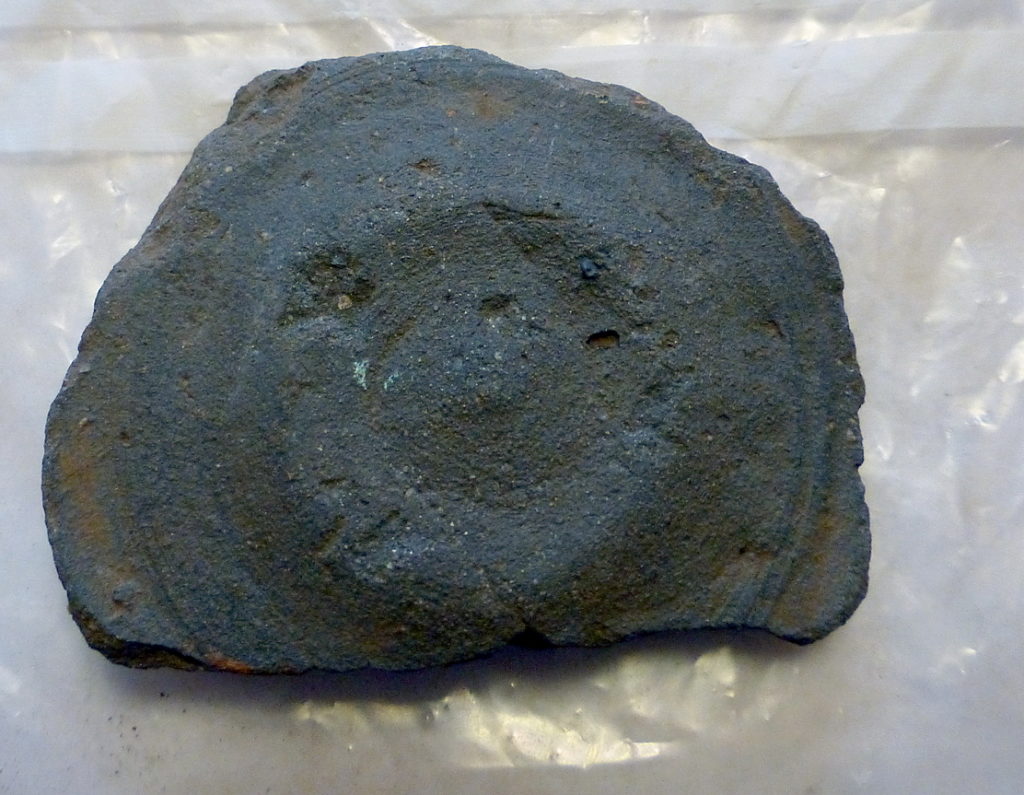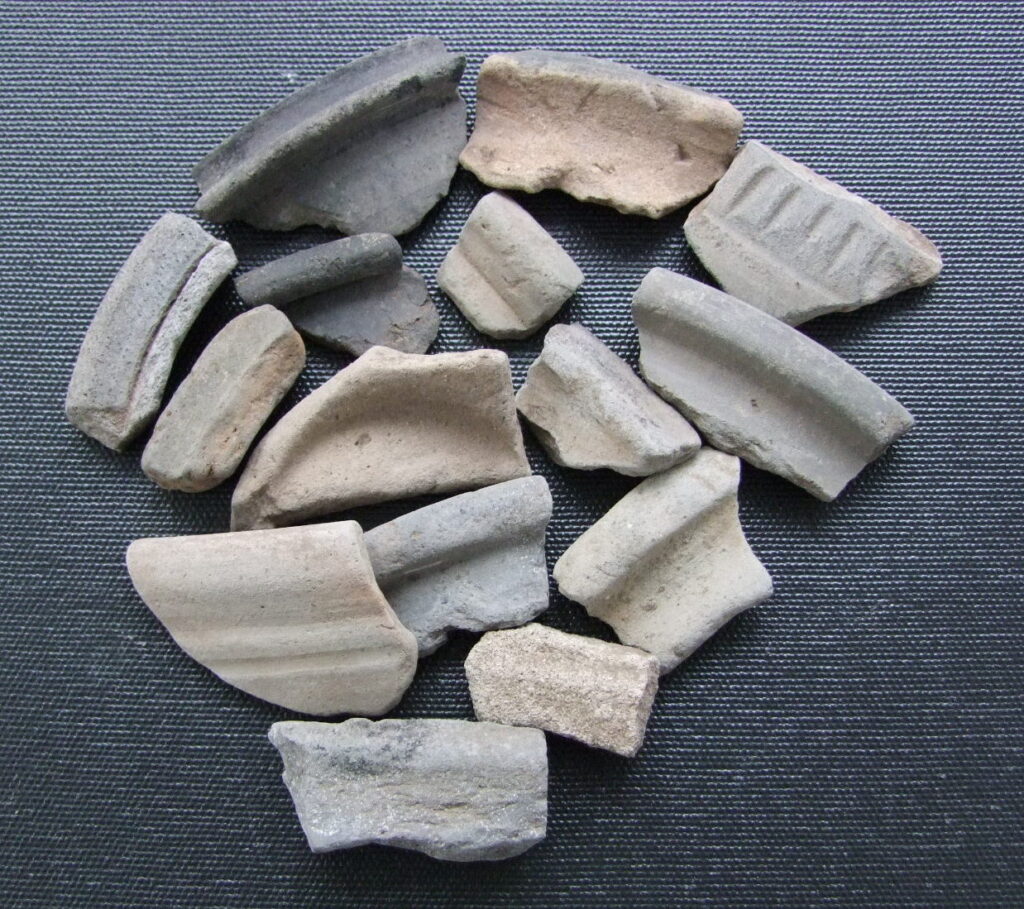
Pottery Gallery

Pottery Gallery
All the pottery shown in this gallery was found in Martham unless otherwise stated.



The Roman greyware shown here verifies Romano-British occupation of the village before the Saxon era. Greyware started to be mass produced c.AD70 and became the dominant common use domestic pottery from the 1st to early 4th century following the introduction of new technologies like the kick wheel and
kiln firing that dramatically increased pottery production in Roman Britain.
Contributor Jean.







Samian ware is basically fancy Roman tableware. It is the most commonly used high quality pottery to be found in Roman Britain but was mainly made in the southern, central and eastern areas of Gaul. It may have been imported locally via the Roman port at Caister-on-Sea or from Caistor by Norwich.
Contributor Jean.

A fine pottery sherd from a Roman Samian ware bowl.
Samian ware is the name given to red-gloss pottery that was mass-produced from the 1st to the 3rd century AD.
This fine dining ware was produced mainly in northern Italy but some small-scale production took place at Colchester in Roman Britain.
Contributor A.


Generally speaking Pagan Saxon pottery was brittle and does not survive very well in plough soil; it is therefore hard to find.
In 1978 a small shard from a Saxon burial urn dating to c500-600AD was found in the village thus supporting its Saxon origins. The actual piece is now in the hands of the Norfolk Museum Service but is indicated by the drawing below and a sample photo of the type of urn it would have come from. Contributor PD.


As we would expect the relatively high local population during the medieval period gives rise to a wide variety of medieval pottery finds across the village and samples are shown below. Contributor PD.




